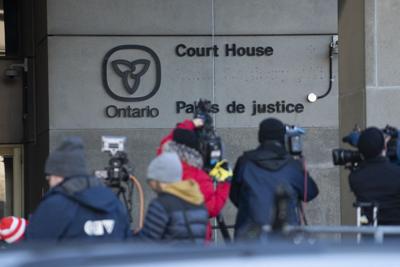Seven years on, following eight weeks of trial, we have a verdict in what has come to be known as the “Hockey Canada trial”: not guilty on all counts.
High-profile cases like these offer a glaring reminder of the flaws in how the criminal system responds to sexual violence. This verdict reminds us that the legal system demands certainty in situations defined by trauma, silence, and power imbalance.
As in this case, survivors can face disbelief when they report, invasive and often re-traumatizing questioning, and long delays between reporting and any eventual trial. Proof beyond a reasonable doubt is an incredibly high bar to clear, and behaviour may be morally hollow but not illegal. It is no wonder that only 5 per cent of all sexual assaults are ever reported to police.
And that’s the heart of it: this system, as it stands, is not enough. Not for survivors. Not for accountability. Not for a culture that claims to care about consent and safety. Survivors need and deserve options beyond the criminal system, including restorative justice.Â
These alternative approaches can offer more survivor-centered, culturally relevant, and trauma-informed pathways to healing and accountability — especially for those who may not feel safe or supported within the traditional legal system.
This might involve facilitated dialogue, indirect communication, or parallel processes that support both the survivor and the person who caused harm in working toward accountability and repair. There are a range of models designed to be protective and supportive, grounded in principles of safety, equity, and survivor self-determination — offering flexible pathways that respond to the complexity of harm and healing.
Take for example , where a survivor pursued a community justice program where the man accused of assaulting her underwent months of therapy before eventually taking accountability and apologizing to her in a private room. This met what she needed — accountability and healing, not jail.
In Alberta, provides options that bring victims and accused persons together, including through community conferencing, restorative dialogue, and peacemaking or sentencing circles. The accused person has to take responsibility, and may be required to plead guilty.
These approaches are especially important because the criminal legal system often fails to meet the needs of many survivors — particularly those from marginalized communities — by focusing on punishment rather than survivors choices, healing, safety, or transformation.
Restorative justice offers one alternative that can be more flexible, trauma-informed, and responsive to the complexities of harm.
Critics of restorative justice for sexual violence argue it is a “soft on crime” response that minimizes the harm caused. However, this critique overlooks the fact that the Canadian justice system itself is rooted in principles like rehabilitation and reform — not solely punishment or deterrence. Legal accountability does not only come through punitive measures.
Survivors have diverse needs — and should be able to choose a response that meets those needs. Many ,Ěý, that restorative justice allowed them to heal and centre their own experience, while enabling those who caused harm to take responsibility for it.
By addressing the underlying causes of harmful behaviour, restorative justice can both repair damage and reduce the likelihood of future violence. It is not a replacement for the current system, but an additional framework that expands the possibilities for justice.
Ontario has the opportunity to take a leadership role in exploring restorative justice options that are survivor-centred, trauma-informed, and voluntary.
Step one would be to heed from survivors, advocates and organizations to end the prohibition on restorative justice for sexual violence and properly fund restorative justice options. Enabling well-resourced, accessible options for support and accountability would complement the success Ontario has had in providing free, independent legal advice to survivors. When supported by robust risk assessment, screening, and professional guidance, restorative justice can provide a powerful, respectful, and survivor-centered option for addressing harm.
The Hockey Canada trial provides yet another example of why the criminal system cannot be the default way we respond to reports of sexual violence. It is time to give survivors more options that respond to what they need, provide accountability, and promote public safety. Restorative justice should be one of these options.
Error! Sorry, there was an error processing your request.
There was a problem with the recaptcha. Please try again.
You may unsubscribe at any time. By signing up, you agree to our and . This site is protected by reCAPTCHA and the Google and apply.
Want more of the latest from us? Sign up for more at our newsletter page.


























